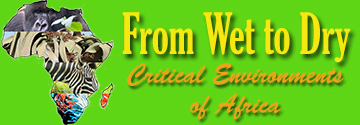
The Okavango Delta is one of the largest wetlands in the world. It is endorheic, meaning that it is a closed water system – all of the water that flows into the Delta only leaves through evaporation, transpiration, and use by animals, rather than flowing to the ocean. This, combined with the extremely flat landscape of northern Botswana, creates a large wetland that floods every year during the rainy season, creating a necessary oasis. Geologic evidence points to an ancient lake, Lake Makgadikgadi, that used to cover the Okavango Delta and much of the surrounding Kalahari, but has all but completely dried up.
In the middle of the dry Kalahari desert, the Okavango Delta provides a welcome oasis for all wildlife. Even though it is commonly believed to be the largest inland delta in the world, it is not – there are two larger ones in Africa, the Sudd Swamp in South Sudan, and the Inner Niger Delta in Mali. One threat to the Okavango Delta is an attempt to build dams further up the river in order to provide more hydropower and fresh water to growing civilizations, but this would reduce the amount of water that reaches the delta. Also, human habitats are encroaching closer to the delta in some regions, which has a detrimental effect on wildlife. Without the lush green wetland, the wildlife in this region would need to find a new source of food and water, both of which are scarce outside of the delta.
Continue on to: Spotlights – Books – Video



